Cats have long fascinated us with their grace, independence, and mystery. From ancient times to today, they have a special place in our hearts and homes. Let’s explore the world of cats, their history, behavior, and the unique bond we share with them.
A Glimpse into History: Cats and Human Civilization
Cats have been part of human history for thousands of years. They were first domesticated around 9,000 years ago in the Near East. Early farming communities attracted wild cats because of the many rodents. Over time, cats provided pest control, and humans gave them food and shelter.
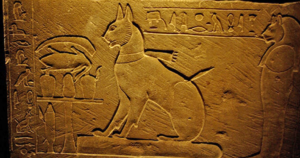
In ancient Egypt, cats were revered and even worshiped. The Egyptian goddess Bastet, depicted with the head of a lioness or domestic cat, symbolized home, fertility, and protection. Killing a cat was a serious crime. Cats were often mummified and buried with their owners, showing their high status.
As trade routes expanded, cats spread worldwide. They were essential on ships, keeping vermin away. In medieval Europe, cats were both feared and valued. While linked to witchcraft, they were also prized for controlling rodents, especially during plagues.
The Unique Behavior of Cats
Cats are known for their distinctive behaviors, which can sometimes confuse their human companions. Understanding these behaviors is key to building a strong and harmonious relationship with your feline friend.

- Purring: The Sound of Contentment
Purring is a recognizable and soothing sound. Cats purr when they are happy and relaxed, but also when they are stressed, scared, or in pain. Purring helps calm them in stressful situations.
- Kneading: A Comforting Ritual
Kneading is when cats push their paws against a soft surface, like a blanket or their owner’s lap. This behavior goes back to kittenhood when they knead their mother’s belly to get milk. In adults, it shows comfort and contentment.

- The Hunter’s Instinct: Play and Predation
Cats still have strong hunting instincts. This is seen in their play, which often mimics hunting. Cats will stalk, pounce, and chase toys, showing their natural skills. Playing is essential for their physical and mental well-being.
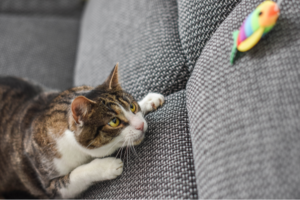
- Head-Butting: A Sign of Affection
Cats show affection in many ways, including head-butting, also known as bunting. When a cat head-butts you, they are marking you with their scent glands. This behavior shows trust and affection.

- The Enigmatic Tail: A Window to Emotions
A cat’s tail can reveal a lot about its mood. A high, upright tail indicates a confident and happy cat, while a tail tucked between the legs shows fear. A twitching tail can mean irritation or excitement. Watching your cat’s tail can help you understand their feelings.
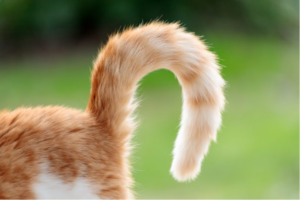
The Human-Feline Bond: A Unique Relationship
The bond between humans and cats is special. Unlike dogs, cats have kept their independence. This has led to a relationship based on companionship rather than utility.
- Companionship and Emotional Support
Cats provide companionship and emotional support to many people. Their presence can reduce stress and anxiety. Petting a cat can lower blood pressure and release endorphins, making you feel good.
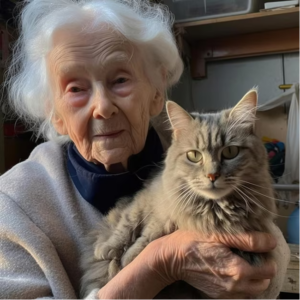
- Cats in Therapy and Healing
Cats are used in therapy in places like hospitals and nursing homes. Therapy cats provide comfort and companionship, helping to improve emotional and physical health. Their presence can help reduce loneliness and depression.
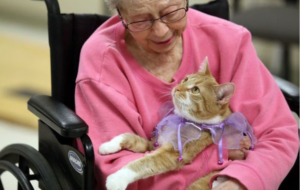
- The Joy of Cat Ownership
Owning a cat brings joy and fulfillment. The playful antics of a kitten, the soothing purr of a content cat, and their unique personalities enrich our lives. Cats teach us patience, empathy, and the importance of living in the moment.
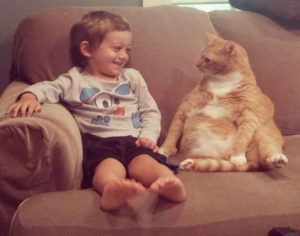
Caring for Your Cat: Essential Tips
Proper care ensures your cat leads a healthy and happy life. Here are some key tips for cat owners:

- Nutrition: Feeding Your Cat
A balanced diet is crucial for your cat’s health. Cats need meat to meet their nutritional needs. Make sure your cat’s diet has high-quality protein and essential nutrients. Avoid feeding your cat human food, as some can be toxic.
- Regular Veterinary Check-Ups
Regular vet check-ups are essential to monitor your cat’s health. Vaccinations, dental care, and screenings for parasites are important.
- Enrichment and Play
Cats need mental and physical stimulation. Provide toys, scratching posts, and climbing structures. Interactive playtime strengthens your bond with your cat and prevents behavioral issues.
- Litter Box Maintenance
Keep the litter box clean for your cat’s hygiene and comfort. Scoop the litter box daily and change the litter regularly. Place it in a quiet, accessible location.
- Grooming and Hygiene
Regular grooming keeps your cat’s coat healthy and reduces shedding. Brush your cat to remove loose fur and prevent hairballs. Trim their claws as needed.
Celebrating Our Feline Friends
Cats are more than pets; they are beloved family members. Their unique personalities and behaviors make them special companions. Understanding and appreciating the world of cats enhances our relationship with them and ensures they lead happy, healthy lives.
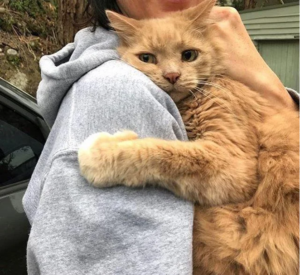
Whether you’re a seasoned cat owner or thinking about adopting a feline friend, the joy and companionship cats bring are immeasurable. Embrace the mysteries of the feline world, and you’ll have a loyal and loving companion for years to come.
Do you have stories, photos, or questions about your feline friends? Join our Discord community today! Connect with fellow cat enthusiasts, and share your favorite cat memes and stories.